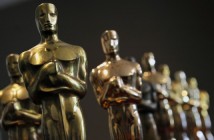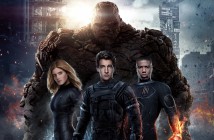Editor’s Note: Projecting features a selection of great film and television focused writing from around the internet.
Meghan O’Keefe examines the importance of fashion in Pulp Fiction, for Decider:
When you think about the clothes in Pulp Fiction, you don’t immediately think of Tim Roth’s Hawaiian shirt or Amanda Plummer’s dusted lilac top. In fact, I actually had to go back and re-watch the film just to jog my memory about what those two characters wear — and they are in the opening and closing scenes of the movie! No, what we all remember are the suits. We remember John Travolta and Samuel L. Jackson’s three piece suits of doom. They look clean. They look sharp. They look in charge. They look dangerous. And Mia Wallace is dressing up exactly like them.
Darren Franich delves into why Collateral was once his favorite movie, for EW:
And Collateral is all of Michael Mann’s movies in one—even The Keep. And more: Collateral is a high point in the career of basically everyone involved. It’s the last Tom Cruise film from the pre-Katie Holmes era—the epitome of Cruise in his unquestioned superstardom, before the couch-jumping Weird Period and the post-couch re-entrenchment in his PG-13 Action-Movie Fortress of Solitude. It’s the last film Jamie Foxx made before Ray turned him into Oscar Winner Jamie Foxx and then Hit Musician Jamie Foxx and then Frustrating Actor Jamie Foxx.
Landon Palmer looks at the strange visions of America depicted in a crop of crap cinema from middle-aged white guys, for Film School Rejects:
Where the larger history of great “bad” movies constitute runaway productions (Ishtar) or independently made B movies assembled quickly enough not be overrun by their misguidedness (Troll 2, Ed Wood’s career), the early 21st century has borne out an impressive slate of best worst classics made available simply by virtue of the fact that several wealthy older men have used their considerable resources alongside today’s relatively inexpensive access to filmmaking equipment in order to realize pet projects that could never have been completed by established, institutional means.
Marah Eakin in discussing Nickelodeon, delves into the importance of diversity in children’s television, for A.V. Club:
While Nickelodeon has historically been pro-diversity—with executive vice president of communication Dan Martinsen telling The A.V. Club that “diversity has always been and continues to be a part of our brand’s DNA”—Hey Arnold!’s setting in a diverse, multi-racial neighborhood was a decision made by the show’s creator, Craig Bartlett. As he told The A.V. Club in an interview for this piece,Hey Arnold!’s setting “spoke about what it was like to live in a modern city,” where “you have all these different ethnicities mixed up.”




